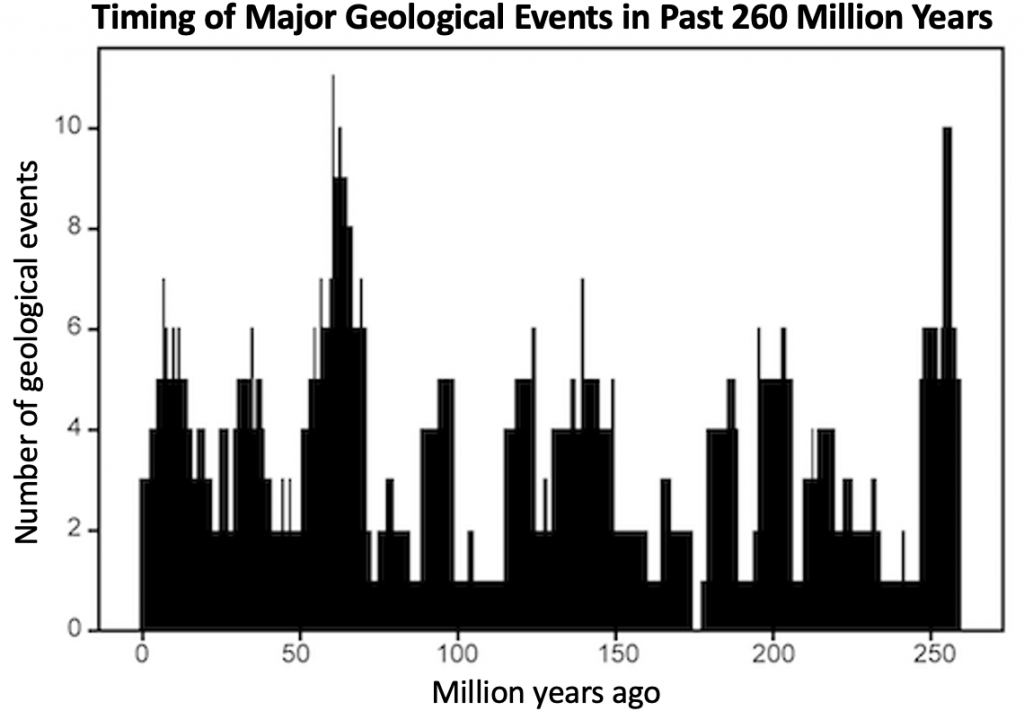Analysis of 260 million years of major geological events finds recurring clusters 27.5 million years apart.
According to a new study published in the journal Geoscience Frontiers, geologic activity on Earth appears to follow a 27.5-million-year cycle, giving the planet a “pulse.”
“Many geologists believe that geological events are random over time. But our study provides statistical evidence for a common cycle, suggesting that these geologic events are correlated and not random,” said Michael Rampino, a geologist and professor in New York University’s Department of Biology, as well as the study’s lead author.
Researchers have proposed cycles of major geological events ranging from 26 to 36 million years in length over the last five decades, including volcanic activity and mass extinctions on land and sea. However, early work on these geological correlations was hampered by limitations in geologic event age-dating, which prevented scientists from conducting quantitative investigations.
However, advances in radio-isotopic dating techniques and shifts in the geologic timescale have resulted in new information about the timing of past events. Rampino and his colleagues updated records of major geological events over the last 260 million years and conducted new analyses using the most recent age-dating data available.

The researchers analyzed at the ages of 89 major geological events from the last 260 million years that were well-dated. Marine and land extinctions, major volcanic lava outpourings known as flood-basalt eruptions, events when oceans were depleted of oxygen, sea-level fluctuations, and changes or reorganization in the Earth’s tectonic plates are all examples of these events.
These global geologic events are generally clustered at ten different timepoints over 260 million years, grouped in peaks or pulses of roughly 27.5 million years apart, according to the researchers. The most recent cluster of geological events occurred about 7 million years ago, implying that the next major geological event takes place more than 20 million years from now.
These pulses, according to the researchers, could be a result of cycles of activity in the Earth’s interior — geophysical processes linked to plate tectonics and climate dynamics. However, similar cycles in the Earth’s orbit in space might also be pacing these events.
“Whatever the origins of these cyclical episodes, our findings support the case for a largely periodic, coordinated, and intermittently catastrophic geologic record, which is a departure from the views held by many geologists,” explained Rampino.
Reference: “A pulse of the Earth: A 27.5-Myr underlying cycle in coordinated geological events over the last 260 Myr” by Michael R. Rampino, Ken Caldeira and Yuhong Zhu, 17 June 2021, Geoscience Frontiers.





